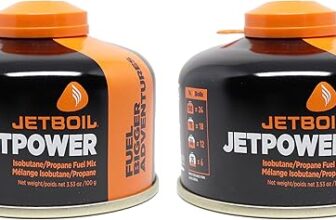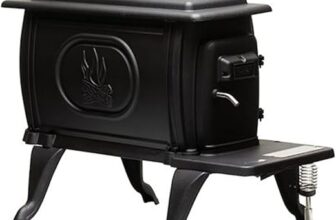
This step-by-step guide details how to clean a sleeping bag liner to maintain its quality and extend its lifespan. It emphasizes the importance of cleaning to prevent dirt and moisture buildup while ensuring the liner continues to provide warmth and comfort during outdoor activities. The guide will cover preparation, choosing the right cleaning products, washing methods (either by hand or machine), drying techniques, and tips for proper storage, making it easy for outdoor enthusiasts to keep their gear in optimal condition for their adventures.



Time to Clean Your Sleeping Bag! #CampingGear #CampingLife #CarCamping
Gather Your Supplies
Gather all necessary supplies before starting your cleaning process. Choose a mild detergent that won’t harm your fabric. Select a soft brush or sponge for delicate scrubbing to avoid damaging the surface. If applicable, get access to a washing machine for efficient cleaning. Lastly, prepare a drying rack or set up a clothesline for air drying your items after washing.
Check Care Instructions
- Read the care label on your sleeping bag liner carefully to grasp the specific washing instructions provided by the manufacturer. This ensures optimal maintenance and longevity of the product.
- Follow the recommended temperature settings when washing your liner. For example, if the label advises cold water, setting your washing machine to cold preserves the fabric’s integrity.
- Check for any special instructions, such as avoiding fabric softeners or using a gentle cycle. Ignoring these details might lead to damage or reduced performance.
- Note any drying guidelines, like air drying or tumble drying on low heat, to avoid shrinkage or potential harm to insulation materials.
Shake Out Dirt and Debris
Take your sleeping bag liner outside, ensuring you are in a clean area free from obstructions. Hold the liner by its corners and give it a vigorous shake to dislodge any loose dirt, sand, or debris caught within the fibers. Pay attention to the inner folds and seams, as these are common areas where particles can hide. Inspect the liner visually to ensure that no debris remains, and repeat the shaking if necessary until it appears clean.
Pre-treat Stains
Inspect the liner carefully for any visible stains. Apply a small amount of mild detergent or a suitable stain remover directly onto the stained area.
- Use a soft brush or sponge to gently rub the stained area.
- Work in a circular motion, applying light pressure to avoid damaging the liner material.
- Rinse the area thoroughly with clean water once the stain is lifted, ensuring no detergent residue remains.
Follow these steps to effectively pre-treat stains and maintain the condition of your liner.
Wash the Liner
Check the care instructions on your sleeping bag liner’s label to ensure it is machine washable. If allowed, place the liner in the washing machine and select a gentle cycle with cold water. Add a mild detergent designed for delicate fabrics to protect the material. If machine washing is not permitted, fill a large tub or sink with cold water and add a small amount of detergent. Immerse the liner in the water, gently agitating it to ensure even cleaning. Rinse thoroughly until no suds remain, then hang or lay flat to dry away from direct sunlight.
Rinse Thoroughly
- After washing, check that all detergent has been completely rinsed out of the fabric. Residual detergent can cause skin irritation and diminish the fabric’s feel and performance.
- If using a washing machine, run an additional rinse cycle. This ensures all soap is eliminated, providing a thorough cleanse.
- For hand washing, drain the tub after washing the garments. Refill it with clean water and immerse the items again, gently agitating them to remove any remaining detergent before draining the water once more.
Remove Excess Water
Gently press the liner between your palms or against a flat surface to remove excess water without wringing it out, which could stretch or damage the fabric. Focus on applying even pressure to prevent any undue stress. For more efficient water absorption, roll the damp liner inside a clean, dry towel. Imagine tucking the liner into the towel like a burrito, then gently pressing down so the towel can soak up additional moisture. Repeat this process until the liner feels damp instead of soaking wet, ensuring it retains its shape and integrity.
Dry the Liner
Hang the sleeping bag liner on a drying rack or a clothesline in a shaded area. Choose a location with good airflow to facilitate drying. Ensure the liner is fully stretched out to avoid creases and promote even drying. Avoid placing it in direct sunlight to protect the fabric from fading and damage. Check periodically, and once it is completely dry, fold it properly for storage or use.
Store Properly
Ensure the liner is completely dry before storing it. Fold the liner neatly to avoid creases, aligning the edges and smoothing out any wrinkles. Place it in a breathable bag or container, such as a cotton storage bag or a mesh container, which allows airflow and prevents moisture buildup. Avoid using plastic bags, as they can trap humidity and lead to mold or mildew. This simple step helps maintain the quality and longevity of the liner until your next adventure.
Final Tips for Care
In conclusion, keeping your sleeping bag liner clean is essential for enhancing your outdoor experience. By following the outlined steps, you can easily maintain the hygiene and durability of your liner, ensuring it remains in top condition for many camping adventures to come. A fresh liner not only contributes to your comfort but also promotes healthy sleeping conditions, making every trip more enjoyable. Remember to clean your liner regularly, and you’ll be well-prepared for your next outing.
Essential Supplies Needed

Effective Cleaning Methods
Optimizing Comfort and Cleanliness: A Step-by-Step Guide to Using Sleeping Bag Liners
- Choose the Right Liner: Pick a sleeping bag liner that suits your needs, such as fabric type (cotton, silk, or fleece), size, and shape (mummy or rectangular) to ensure comfort and compatibility with your sleeping bag
- Insert the Liner: Lay the sleeping bag liner flat inside your sleeping bag. If it is a mummy liner, align the tapered end with the foot of your sleeping bag. Make sure the liner is smooth and taut to avoid discomfort while sleeping
- Use Alone or as an Extra Layer: On warm nights, you can use the liner by itself as a lightweight sleeping solution. Conversely, on colder nights, use it as an added layer to increase insulation and warmth
- Maintain Cleanliness: Protect your sleeping bag from dirt and sweat by sleeping inside the liner. Remember to wash the liner regularly according to the manufacturer’s instructions to keep it fresh and odor-free
- Practice Packing: After use, fold or stuff the liner neatly to minimize space in your pack. Getting familiar with packing it efficiently will make your outdoor experience smoother and more organized
Everything You Need to Know About Sleeping Bag Liners
Yes, there are sleeping bag liners available that come with additional features such as pockets and built-in pillows. These liners are designed to enhance comfort and convenience while camping or traveling. For example, some models include internal pockets for storing small items like phones or headlamps, and others may have a built-in pillow or a pocket to insert a travel pillow for added neck support. When looking for a sleeping bag liner, it’s a good idea to check the product specifications to determine if these features are included.
Sleeping bag liners are commonly made from several types of materials, each offering different benefits. The most frequently used materials include:
- Cotton: A natural, breathable fabric that is soft and comfortable. Cotton liners are easy to care for and can provide warmth, but they may retain moisture.
- Polyester: This synthetic fabric is lightweight, moisture-wicking, and quick-drying, making it a popular choice for camping and backpacking. Polyester liners often offer better insulation and durability compared to cotton.
- Silk: Known for its luxurious feel, silk liners are lightweight and pack down very small. They provide warmth while being breathable and moisture-wicking, but they tend to be more expensive.
- Fleece: Soft and warm, fleece liners add extra insulation and are particularly good for colder conditions. They are also lightweight and quick-drying.
- Nylon or Ripstop Nylon: These durable synthetic fabrics are often used for their strength and lightweight properties. They provide good water resistance and are easy to clean.
Each material serves different purposes depending on the user’s needs, preferred warmth, weight considerations, and care requirements.









When I store my liner, I use a cotton storage bag instead of stuffing it into a bin. It helps maintain its shape and keeps it from getting musty. Just a little tip I picked up from a fellow camper!
Great tip! Storing gear properly can make a big difference in longevity. Thanks for sharing your experience!
I’d love to see a guide on how to clean other camping gear, like tents and backpacks! It would be great to learn tips for keeping everything in top shape.
Thanks for the suggestion! We’re planning to cover cleaning other camping gear in future posts, so stay tuned!
I had a huge food spill in my liner last summer while camping, and used this guide to tackle it. After pre-treating the stain with some baking soda and vinegar, it came out completely! It’s a lifesaver for anyone who’s a bit clumsy like me!
This guide is super helpful! I just used it before my camping trip last weekend, and my liner was so clean and fresh. It made such a difference sleeping in my sleeping bag. Cleaner gear definitely makes for better nights under the stars!
I actually do things a bit differently. I always run my sleeping bag liner through a gentle cycle in my washing machine with a bit of wool detergent. Then I air dry it outside instead of using the dryer. Works like a charm and keeps my liner in great shape!